Bizarre Creations Shuts Its Doors for the Last Time: 1994-2011 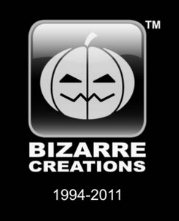 17 years of interesting, thoughtful often exhilarating games. All gone. Today, the Liverpool-based developer Bizarre Creations closed down, after its owner Activision failed to find a buyer. Disappointing sales for the studio's under-rated racer Blur did the damage. "We are exploring our options regarding the future of the studio," said the publisher last November. Its options turned out to be limited. This is a difficult time for the industry. Publishers are streamlining, profit margins are being squeezed, the slow transition to digital distribution is proving painful and unpredictable. Often the victims are the developers. According to the industry trade body, Tiga, around 140 UK studios shut down last year. True, 100 more set up, but a massive majority of those are concentrating on smartphone and digital download games. Nothing wrong with that – it's smart business. But it won't bring Project Gotham back. Bizarre Creations' first major game, a scorching F1 sim for the original PlayStation, announced the intentions of the studio: authentic simulation matched with genuine pedal-to-the-metal thrills. While so many driving game developers floundered in the no-man's land between the sim and the arcade racer, Bizarre Creations – headed by perfectionist Martyn Chudley – just understood how to meet both criteria. The company's Dreamcast classic Metropolis Street Racer was a generation ahead of its competitors. Replicating three huge swathes of London, Tokyo and San Francisco it delivered over 250 circuits and a vast range of challenges and side-quests; it's expansive, non-linear feature set heralded a new age for driving games. As a design endeavour, it was as arguably important as Gran Turismo. Also on Dreamcast was the criminally overlooked Fur Fighters, an inventive, anarchic and funny platform adventure that should be considered alongside Conker's Bad Fur Day, Jak and Daxter, and Ratchet and Clank. Then, the Project Gotham series, another sleek, sophisticated and brilliantly constructed driving franchise. Project Gotham 4, with its masses of DLC and clever introduction of the Gotham TV channel was another prescient achievement, hinting at the community-led digital features that now adorn the likes of Need For Speed: Hot Pursuit and Shift 2. And there was The Club, a brave experiment in genre-bending, bringing a driving game mechanic to the third-person shooter. And Geometry Wars, an authentic, thrilling 2D shooter, that got in early on the whole retro DLC scene and remained at its head. And Blur. Lost, perhaps in the packed 2010 release schedule, a little bit too idiosyncratic, not perfect – but another inventive, exciting title, packed with ideas and craft. As for Bloodstone... well, it was a leap above most James Bond games without 'Goldeneye' in the title. Goodbye Bizarre Creations.  
How one man tracked down Anonymous—and paid a heavy price Aaron Barr believed he had penetrated Anonymous. The loose hacker collective had been responsible for everything from anti-Scientology protests to pro-Wikileaks attacks on MasterCard and Visa, and the FBI was now after them. But matching their online identities to real-world names and locations proved daunting. Barr found a way to crack the code. In a private e-mail to a colleague at his security firm HBGary Federal, which sells digital tools to the US government, the CEO bragged about his research project. "They think I have nothing but a heirarchy based on IRC [Internet Relay Chat] aliases!" he wrote. "As 1337 as these guys are suppsed to be they don't get it. I have pwned them!  " But had he? "We are kind of pissed at him right now" Aaron Barr Barr's "pwning" meant finding out the names and addresses of the top Anonymous leadership. While the group claimed to be headless, Barr believed this to be a lie; indeed, he told others that Anonymous was a tiny group. "At any given time there are probably no more than 20-40 people active, accept during hightened points of activity like Egypt and Tunisia where the numbers swell but mostly by trolls," he wrote in an internal e-mail. (All e-mails in this investigative report are provided verbatim, typos and all.) "Most of the people in the IRC channel are zombies to inflate the numbers." The show was run by a couple of admins he identified as "Q," "Owen," and "CommanderX"—and Barr had used social media data and subterfuge to map those names to three real people, two in California and one in New York. Near the end of January, Barr began publicizing his information, though without divulging the names of the Anonymous admins. When the Financial Times picked up the story and ran a piece on it on February 4, it wasn't long before Barr got what he wanted—contacts from the FBI, the Director of National Intelligence, and the US military. The FBI had been after Anonymous for some time, recently kicking in doors while executing 40 search warrants against group members. Confident in his abilities, Barr told one of the programmers who helped him on the project, "You just need to program as good as I analyze." But on February 5, one day after the Financial Times article and six days before Barr's sit-down with the FBI, Anonymous did some "pwning" of its own. "Ddos!!! Fckers," Barr sent from his iPhone as a distributed denial of service attack hit his corporate network. He then pledged to "take the gloves off." When the liberal blog Daily Kos ran a story on Barr's work later that day, some Anonymous users commented on it. Barr sent out an e-mail to colleagues, and he was getting worked up: "They think all I know is their irc names!!!!! I know their real fing names. Karen [HBGary Federal's public relations head] I need u to help moderate me because I am getting angry. I am planning on releasing a few names of folks that were already arrested. This battle between us will help spur publicity anyway." Indeed, publicity was the plan. Barr hoped his research would "start a verbal braul between us and keep it going because that will bring more media and more attention to a very important topic." But within a day, Anonymous had managed to infiltrate HBGary Federal's website and take it down, replacing it with a pro-Anonymous message ("now the Anonymous hand is bitch-slapping you in the face.") Anonymous got into HBGary Federal's e-mail server, for which Barr was the admin, and compromised it, extracting over 40,000 e-mails and putting them up on The Pirate Bay, all after watching his communications for 30 hours, undetected. In an after-action IRC chat, Anonymous members bragged about how they had gone even further, deleting 1TB of HBGary backup data. They even claimed to have wiped Barr's iPad remotely. The situation got so bad for the security company that HBGary, the company which partially owns HBGary Federal, sent its president Penny Leavy into the Anonymous IRC chat rooms to swim with the sharks—and to beg them to leave her company alone. (Read the bizarre chat log.) Instead, Anonymous suggested that, to avoid more problems, Leavy should fire Barr and "take your investment in aaron's company and donate it to BRADLEY MANNINGS DEFENCE FUND." Barr should cough off up a personal contribution, too; say, one month's salary? As for Barr's "pwning," Leavy couldn't backtrack from it fast enough. "We have not seen the list [of Anonymous admins] and we are kind of pissed at him right now." Were Barr's vaunted names even correct? Anonymous insisted repeatedly that they were not. As one admin put it in the IRC chat with Leavy, "Did you also know that aaron was peddling fake/wrong/false information leading to the potential arrest of innocent people?" The group then made that information public, claiming that it was all ridiculous. Thanks to the leaked e-mails, we now have the full story of how Barr infiltrated Anonymous, used social media to compile his lists, and even resorted to attacks on the codebase of the Low Orbit Ion Cannon—and how others at his own company warned him about the pitfalls of his research. Anonymous, angry at Barr "I will sell it" Barr had been interested in social media for quite some time, believing that the links it showed between people had enormous value when it came to mapping networks of hackers—and when hackers wanted to target their victims. He presented a talk to a closed Department of Justice conference earlier this year on "specific techniques that can be used to target, collect, and exploit targets with laser focus and with 100 percent success" through social media. His curiosity about teasing out the webs of connections between people grew. By scraping sites like Facebook or LinkedIn, Barr believed he could draw strong conclusions, such as determining which town someone lived in even if they didn't provide that information. How? By looking at their friends. "The next step would be ok we have 24 people that list Auburn, NY as their hometown," he wrote to the programmer implementing his directives. "There are 60 other people that list over 5 of those 24 as friends. That immediately tells me that at a minimum those 60 can be tagged as having a hometown as Auburn, NY. The more the data matures the more things we can do with it." The same went for hackers, whose family and friends might provide information that even the most carefully guarded Anonymous member could not conceal. "Hackers may not list the data, but hackers are people too so they associate with friends and family," Barr said. "Those friends and family can provide key indicators on the hacker without them releasing it…" His programmer had doubts, saying that the scraping and linking work he was doing was of limited value and had no commercial prospects. As he wrote in an e-mail: Step 1 : Gather all the data Step 2 : ??? Step 3 : Profit But Barr was confident. "I will sell it," he wrote. To further test his ideas and to drum up interest in them, Barr proposed a talk at the BSides security conference in San Francisco, which takes place February 14 and 15. Barr's talk was titled "Who Needs NSA when we have Social Media?" and his plan to draw publicity involved a fateful decision: he would infiltrate and expose Anonymous, which he believed was strongly linked to WikiLeaks. "I am going to focus on outing the major players of the anonymous group I think," he wrote. "Afterall - no secrets right?  We will see how far I get. I may focus on NSA a bit to just so I can give all those freespeech nutjobs something… I just called people advocating freespeech, nutjobs - I threw up in my mouth a little." With that, the game was afoot. "I enjoy the LULZ" Barr created multiple aliases and began logging on to Anonymous IRC chat rooms to figure out how the group worked. He worked to link these IRC handles to real people, in part using his social networking expertise, and he created fake Twitter accounts and Facebook profiles. He began communicating with those he believed were leaders. After weeks of this work, he reported back to his colleagues on how he planned to use his fake personas to drum up interest in his upcoming talk. I have developed a persona that is well accepted within their groups and want to use this and my real persona against eachother to build up press for the talk. Pre-talk plan. I am going to tell a few key leaders under my persona, that I have been given information that a so called cyber security expert named Aaron Barr will be briefing the power of social media analysis and as part of the talk with be dissecting the Anonymous group as well as some critical infrastructure and government organizations I will prepare a press sheet for Karen to give to Darkreading a few days after I tell these folks under persona to legitimize the accusation. This will generate a big discussion in Anonymous chat channels, which are attended by the press. This will then generate press about the talk, hopefully driving more people and more business to us. Barr then contacted another security company that specializes in botnet research. He suspected that top Anonymous admins like CommanderX had access to serious Internet firepower, and that this probably came through control of bots on compromised computers around the world. Barr asked if the researchers could "search their database for specific targets (like the one below) during an operational window (date/time span) to see if any botnet(s) are participating in attacks? Below is an attack which is currently ongoing." (The attack in question was part of Anonymous' "Operation Payback" campaign and was targeted at the government of Venezuela.) The report that came back focused on the Low Orbit Ion Cannon, a tool originally coded by a private security firm in order to test website defenses. The code was open-sourced and then abandoned, but someone later dusted it off and added "hivemind mode" that let LOIC users "opt in" to centralized control of the tool. With hundreds or thousands of machines running the stress-test tool at once, even major sites could be dropped quickly. (The company recorded only 1,200 machines going after MasterCard on December 11, for instance.) To boost the credibility of his online aliases, Barr then resorted to a ruse. He asked his coder to grab the LOIC source code. "I want to add some code to it," Barr said. "I don't want to distribute that, it will be found and then my persona will be called out. I want to add it, distribute it under a persona to burn and then have my other persona call out the code." 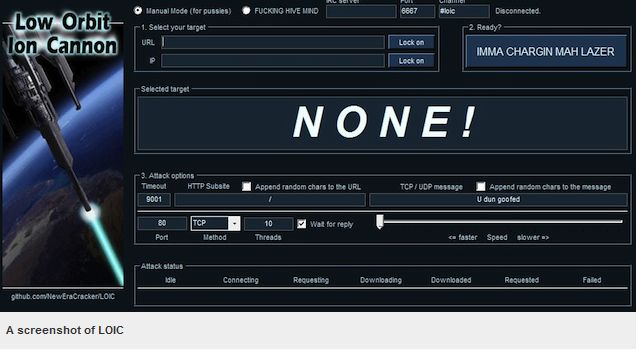 A screenshot of LOIC The code to be added was an HTTP beacon that linked to a free website Barr had set up on Blogspot. He wanted a copy of the altered source and a compiled executable. His programmer, fearing Anonymous, balked. On January 20, the coder wrote back, "I'm not compiling that shit on my box!" He even refused to grab a copy of the source code from message boards or other IRC users, because "I ain't touchin' any of that shit as those are already monitored." "Dude," responded Barr. "Anonymous is a reckless organization. C'mon I know u and I both understand and believe generally in their principles but they are not a focused and considerate group, the[y] attack at will and do not care of their effects. Do u actually like this group?" The coder said he didn't support all they did, but that Anonymous had its moments. Besides, "I enjoy the LULZ." "Dude—who's evil?" At one time, Barr supported WikiLeaks. When the site released its (edited) "Collateral Murder" video of a US gunship killing Reuters photographers in Iraq, Barr was on board. But when WikiLeaks released its huge cache of US diplomatic cables, Barr came to believe "they are a menace," and that when Anonymous sprang to the defense of WikiLeaks, it wasn't merely out of principle. It was about power. "When they took down MasterCard do u think they thought alright win one for the small guy!" he asked. "The first thought through most of their malcontented minds was a rush of power. That's not ideals." He continued in this philosophical vein: But dude whos evil? US Gov? Wikileaks? Anonymous? Its all about power. The Wikileaks and Anonymous guys think they are doing the people justice by without much investigation or education exposing information or targeting organizations? BS. Its about trying to take power from others and give it to themeselves. I follow one law. Mine. His coder asked Barr how he slept at night, "you military industrial machine capitalist." "I sleep great," Barr responded. "Of course I do indoor [enjoy?] the money and some sense of purpose. But I canget purpose a lot of places, few of which pay this salary." The comments are over the top, of course. Elsewhere, Barr gets more serious. "I really dislike corporations," he says. "They suck the lifeblood out of humanity. But they are also necessary and keep us moving, in what direction I don't know. "Governments and corporations should have a right to protect secrets, senstive information that could be damage to their operations. I think these groups are also saying this should be free game as well and I disagree. Hence the 250,000 cables. WHich was bullshit… Society needs some people in the know and some people not. These folks, these sheep believe that all information should be accessible. BS. And if they truly believe it then they should have no problem with me gathering information for public distribution." But Anonymous had a bit of a problem with that. The hunter and the hunted As Barr wrapped up his research and wrote his conference presentation, he believed he had unmasked 80-90 percent of the Anonymous leadership—and he had done it all using publicly available information. "They are relying on IP for anonymity," he wrote in a draft of his presentation. "That is irrelevant with social media users. U use IRC and FB and Twitter and Forums and Blogs regularly… hiding UR IP doesn't matter." Barr would do things like correlate timestamps; a user in IRC would post something, and then a Twitter post on the same topic might appear a second later. Find a few of these links and you might conclude that the IRC user and the Twitter user were the same person. Even if the content differed, what if you could correlate the times that someone was on IRC with the times a Facebook user was posting to his wall? "If you friend enough people you might be able to correlate people logging into chat with people logging into Facebook," Barr wrote. The document contained a list of key IRC chatrooms and Twitter accounts. Facebook groups were included, as were websites. But then Barr started naming names. His notes are full of comments on Anonymous members. "Switch" is a "real asshole but knows what he's talking about," while "unbeliever" might be "alexander [last name redacted]." In the end, Barr determined that three people were most important. A figure called Q was the "founder and runs the IRC. He is indead in California, as are many of the senior leadership of the group." Another person called Owen is "almost a co-founder, lives in NY with family that are also active in the group, including slenaid and rabbit (nicks)." Finally, CommanderX can "manage some significant firepower." Barr believed he had matched real names to each of these three individuals. He wasn't doing it to actually expose the names, though. "My intent is not to do this work to put people in jail," Barr wrote to others in the company. "My intent is to clearly demonstrate how this can be effectively used to gather significant intelligence and potentially exploit targets of interest (the other customers will read between the lines)." He then revealed himself on Twitter to the person he believed was CommanderX. "I am not going to release names," Barr said on February 5, using the alias Julian Goodspeak. "I am merely doing security research to prove the vulnerability of social media." He asked for Anonymous to call off its DDoS attack on HBGary Federal, an attack that had begun earlier that day. Barr reveals himself Some of the responses from CommanderX were a bit chilling. Late in the conversation, CommanderX warned Barr "that your vulnerabilities are far more material. One look at your website locates all of your facilities. You might want to do something about that. Just being friendly. I hope you are being paid well." Then came an IRC log that Barr sent around, in which a user named Topiary tried to recruit him (under the name CogAnon) for "a new operation in the Washington area" where HBGary Federal has its headquarters. The target is "a security company." The Anonymous "threat" By late afternoon on the 5th, Barr was angry and perhaps a little scared, and he asked his PR person to "help moderate me because I am getting angry. I am planning on releasing a few names of folks that were already arrested." It's not clear that Barr ever did this, however; he admitted in another e-mail that he could get a bit "hot" in private, though he would generally cool down before going public. Hours later, the attack escalated from some odd DDoS traffic to a full-scale break-in of HBGary Federal systems, one that showed tremendous skill. "What amazes me is, for a security company - you had such a basic SQL vulnerability on your website," wrote one Anonymous member later. Days afterward, the company has still not managed to restore its complete website. "Danger, Will Robinson!" Throughout Barr's research, though, the coder he worked with worried about the relevance of what was being revealed. Barr talked up the superiority of his "analysis" work, but doubts remained. An email exchange between the two on January 19 is instructive: Barr: [I want to] check a persons friends list against the people that have liked or joined a particular group. Coder: No it won't. It will tell you how mindless their friends are at clicking stupid shit that comes up on a friends page. especially when they first join facebook. Barr: What? Yes it will. I am running throug analysis on the anonymous group right now and it definately would. Coder: You keep assuming you're right, and basing that assumption off of guilt by association. Barr: Noooo….its about probabilty based on frequency...c'mon ur way smarter at math than me. Coder: Right, which is why i know your numbers are too small to draw the conclusion but you don't want to accept it. Your probability based on frequency right now is a gut feeling. Gut feelings are usually wrong. Barr: [redacted] Coder: [some information redacted] Yeah, your gut feelings are awesome! Plus, scientifically proven that gut feelings are wrong by real scientist types. Barr: [some information redacted] On the gut feeling thing...dude I don't just go by gut feeling...I spend hours doing analysis and come to conclusions that I know can be automated...so put the taco down and get to work! Coder: I'm not doubting that you're doing analysis. I'm doubting that statistically that analysis has any mathematical weight to back it. I put it at less than .1% chance that it's right. You're still working off of the idea that the data is accurate. mmmm…..taco! Later, when Barr talks about some "advanced analytical techniques" he's been pondering for use on the Anonymous data, the coder replies with apparent frustration, "You keep saying things about statistics and analytics but you haven't given me one algorithm or SQL query statement." Privately, the coder then went to another company official with a warning. "He's on a bad path. He's talking about his analytics and that he can prove things statistically but he hasn't proven anything mathematically nor has he had any of his data vetted for accuracy, yet he keeps briefing people and giving interviews. It's irresponsible to make claims/accusations based off of a guess from his best gut feeling when he has even told me that he believes his gut, but more often than not it's been proven wrong. I feel his arrogance is catching up to him again and that has never ended well...for any of us." Others made similar dark warnings. "I don't really want to get DDOS'd, so assuming we do get DDOS'd then what? How do we make lemonade from that?" one executive asked Barr. The public relations exec warned Barr not to start dropping real names: "Take the emotion out of it -> focus on the purpose. I don't see benefit to you or company to tell them you have their real names -- published or not." Another internal warning ended: "Danger Will Robinson. You could end up accusing a wrong person. Or you could further enrage the group. Or you could be wrong, and it blows up in your face, and HBGary's face, publicly." "Quite simply, nonsense" But Barr got his Financial Times story, and with it the publicity he sought. He also made clear that he had the real names, and Anonymous knew he would soon meet with the FBI. Though Barr apparently planned to keep his names and addresses private even at this meeting, it was easy to see why Anonymous would have doubts. When HBGary President Penny Leavy, who was an investor in separate company HBGary Federal, waded into IRC to reason with Anonymous, she pleaded ignorance of Barr's activities and said that they were "for security research only; the article was to get more people to the [BSides] event." To which someone responded, "Penny: if what you are saying is tree [true] then why is Aaron meeting with the FBI tomorrow morning at 11am? PLEASE KEEP IN MIND WE HAVE ALL YOUR EMAILS." (The answer from the e-mails is that Barr was trying to drum up business with the feds, not necessarily take down Anonymous.) As for the names in Barr's BSides presentation, Anonymous insisted that they were wrong. "Penny please note that the names in that file belong to innocent random people on facebook. none of which are related to us at all," said one admin. Another user complained to Leavy that "the document that [Barr] had produced actually has my girlfriend in it. She has never done anytihng with anonymous, not once. I had used her computer a couple times to look at a group on facebook or something." In the note posted on HBGary Federal's website when it was taken over, Anonymous blasted Barr's work. "You think you've gathered full names and addresses of the 'higher-ups' of Anonymous? You haven't. You think Anonymous has a founder and various co-founders? False…. We laughed. Most of the information you've 'extracted' is publicly available via our IRC networks. The personal details of Anonymous 'members' you think you've acquired are, quite simply, nonsense." Oh—and remember the threatening IRC log above, the one "recruiting" Barr to attack a DC security company? Anonymous says that it was all a joke. "I mean come on, Penny," wrote Topiary in an IRC chat, "I messaged Aaron in PM [private message] and told him about a 'secret' Washington OP, then he emailed the company (including you) being entirely confident that we were directly threatening you, and he thought we didn't know who he was. "He seriously works at a security company?" Never forgive, never forget Barr's hacked Twitter account Anonymous doesn't like to let up. Barr's Twitter account remains compromised, sprinkled with profane taunts. The HBGary websites remain down. The e-mails of three key players were leaked via BitTorrent, stuffed as they were with nondisclosure agreements, confidential documents, salary numbers, and other sensitive data that had nothing to do with Anonymous. And they have more information—such as the e-mails of Greg Hoglund, Leavy's husband and the operator of rootkit.org (which was also taken down by the group). When Leavy showed up to plead her case, asking Anonymous to at least stop distributing the e-mails, the hivemind reveled in its power over Leavy and her company, resorting eventually to tough demands against Barr. "Simple: fire Aaron, have him admit defeat in a public statement," said Topiary, when asked what the group wanted. "We won't bother you further after this, but what we've done can't be taken back. Realize that, and for the company's sake, dispose of Aaron." Others demanded an immediate "burn notice" on Barr and donations to Bradley Manning, the young military member now in solitary confinement on suspicion of leaking classified documents to Wikileaks. The hack unfolded at the worst possible time for HBGary Federal. The company was trying to sell, hopefully for around $2 million, but the two best potential buyers started to drag their heels. "They want to see delivery on pipeline before paying those prices," Leavy wrote to Barr. "So initial payout is going to be lower with both companies I am talking with. That said our pipeline continues to drag out as customers are in no hurry to get things done quickly so if we dont sell soon and our customers dont come through soon we are going to have cash flow issues." And being blasted off the 'Net by Anonymous is practically the last thing a company in such a situation needs. After the attacks, Leavy told the Financial Times that they cost HBGary millions of dollars. “I wish it had been handled differently,” she added. "The Internet is here" And who were Barr and his company up against in all this? According to Anonymous, a five-member team took down HBGary Federal and rootkit.com, in part through the very sort of social engineering Barr had tried to employ against Anonymous. One of those five was allegedly a 16-year old girl, who "social engineered your admin jussi and got root to rootkit.com," one Anonymous member explained in IRC. Another, pleased with power, harrassed Penny Leavy and her husband, who sat beside her during the chat: "How does it feel to get hacked by a 16yr old girl?" One can almost hear the taunt echoing from some kind of grade school playground. The attackers are quintessentially Anonymous: young, technically sophisticated, brash, and crassly juvenile, all at the same time. And it's getting ever more difficult to dismiss Anonymous' hacker activity as the harmless result of a few mask-wearing buffoons. Perhaps the entire strange story can be best summed up by a single picture, one that Barr e-mailed to two of his colleagues back on January 28. "Oh fuck," it says beneath a picture of an Anonymous real-world protest. "The Internet is here." 
Nutting & Associates Computer Space
The World's First Video Game!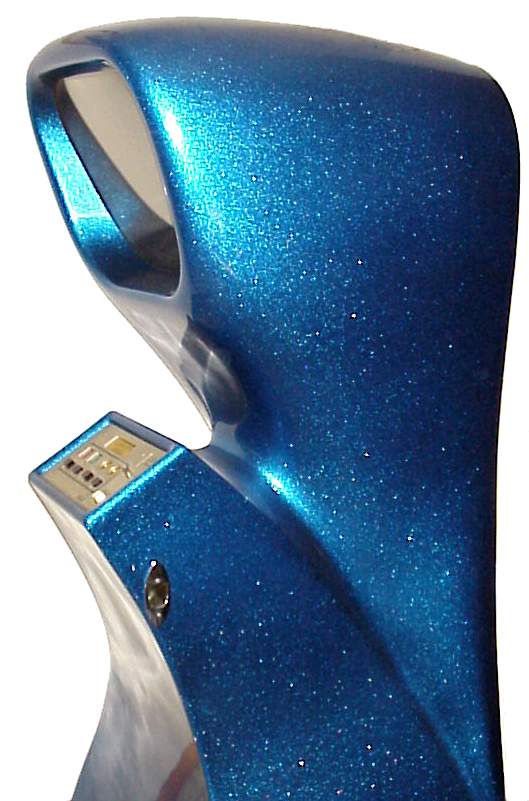 Specifications and information Introduced: 1972 CPU: TTL Logic Controls: Single-player button controls on console: one button pair for left-right rotate, one button for accelerate, and one button for fire Games: Variation of Space Wars A lot of people will tell you that Pong was the first video game. And they'd be wrong. 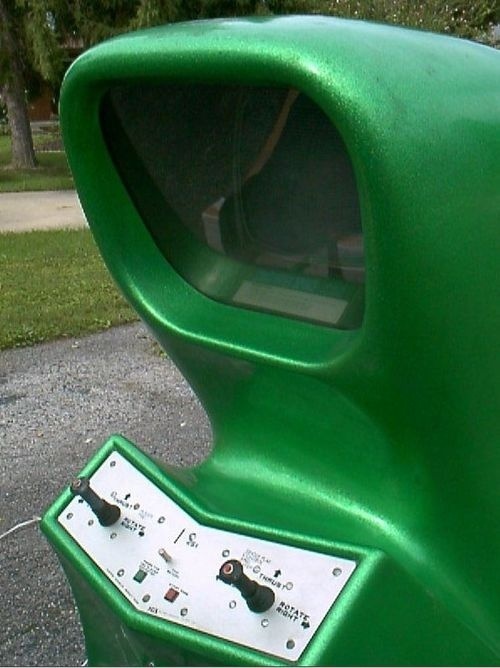 Nutting & Associates Computer Space is the world's first arcade video game system. It was designed almost two years before Pong, by Nolan Bushnell, who would later found Atari Corporation and create the Pong game. Computer Space proved too complicated to play for a public who had no experience with video games. Today it seems very simple... a group of flying saucers moves across the screen, and the player's ship has to shoot them or be shot. The player ship maneuvering controls are exactly like Atari's eventual hit, Asteroids. Not many machines were sold, although Nutting tried making a two-player version later on, in hopes of attracting players away from the air hockey tables. 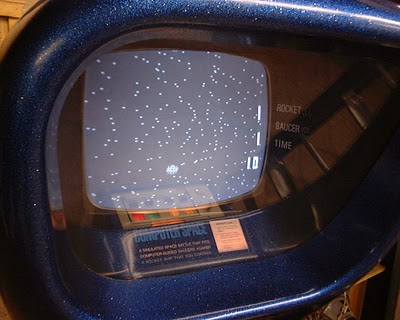 Computer Space was inspired by the first action computer game, PDP-11 Space War. Direct ancestors of Computer Space include Cinematronics Space War, Atari Asteroids, Atari Space Duel, Atari Gravitar, Midway Omega Race, and a host of other imitators. Strangely enough, its durable, lightweight and attractive fiberglass case design was never again used for arcade video games. Watch for a Computer Space machine, painted white (ugh!), making a cameo appearance in the film Soylent Green with Charlton Heston. It shows up fairly early in the film, in the background of the apartment of the wealthy murder victim.
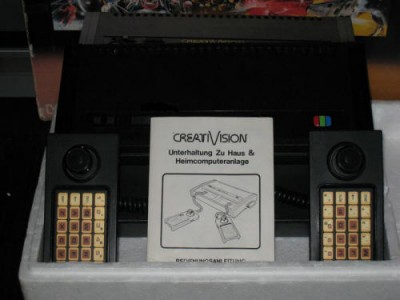 History Hong Kong, 1981. Electronic game manufacturer VTech attempts to join the home videogaming market by engineering an original system capable of competing against VCS 2600 and Intellivision, which gave Atari and Mattel enormous incomes. The idea is certainly clever: to offer users what the competitors can't do, that's the chance to programme their own software on a powerful console hardware by expanding it with computer-style periphherals such as keyboard, cassette tape player/recorder, printer, etc. Actually this is not the first "hybrid" computer/console system: American electronic company APF sold their "Imagination Machine" in 1980, a console which could be expanded into a full home computer. The Creativision project is quite ambitious and VTech engineers decide to endow it with the most recent available hardware such as the Rockwell 6502A microprocessor running at 2 MHz, the Texas Instruments TMS9928/9929 (NTSC/PAL) video display processor managing up to 32 sprites on a 256x192 pixels screen at 16 colours, and a Texas Instruments SND76489 sound generator featuring 3 mono + 1 noise channels. Such a powerful hardware has never been seen on a home videogame and computer system! 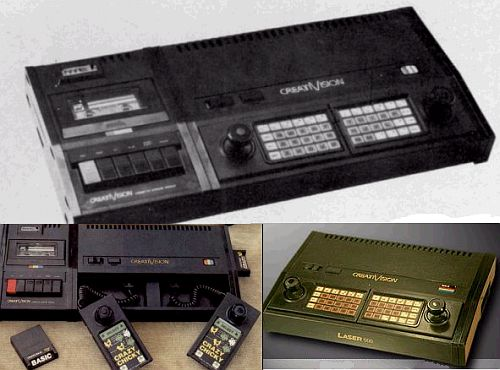 Such technological wonder would be very expensive if it's to be manufactured in USA or Europe... but VTech is located in the cheapest Hong Kong, hence costs can be reduced quite a lot. For this reason, the Creativision system is even cheaper than "obsolete" gaming-only systems such as Atari VCS 2600 and Mattel Intellivision. Hardware is done, so the next step is to write dedicated software. At first, programmers focus their efforts on designing games and... they choose the cheapest way, that's simply "cloning" top sales videogames and then change graphics, sounds and plot - such a procedure is quite common in the 80's, even though it often causes copyright issues! As a result, we have Police Jump (Donkey Kong), Sonic Invader (Space Invaders), Planet Defender (Defender), Auto Chase (New Rally-X), Mouse Puzzle (Loco-Motion), etc. There's even a Pac-Man clone named Crazy Pucker, which is then retired from shops due to legal issues with Namco, and then reissued with the name of Crazy Chicky: the game now shows a chicken (Pac-Man) who fills a labyrinth with eggs (dots) and foxes (ghosts) trying to eat her. The Creativision system hits the Hong Kong market in the first half of 1982, and a few months later it's also distributed in Europe (Italy, Germany, Sweden, Austria, Switzerland), South-Africa, Australia and Japan. The "Creativision" name is kept for all markets except Australia and New Zealand, where it's sold through Dick Smith Electronics (a very popular electronic store) with the name of "Wizzard". All boxes, manuals (in various languages) and accessories are produced in Hong Kong and then provided to distributors, and all consoles do share the same hardware. It's a PAL-only system except the Japanese version (NTSC) which is extremely rare and sought after by collectors. The complete list of distributors is: - Italy: Zanussi Elettronica - Germany: Sanyo Video GmbH - Austria: Spiel-Sport Stadlbauer - Sweden: Elof Hansson - Switzerland: J. M. Rosengarten - South Africa: Telefunken MicroTek - Australia & N.Z.: Dick Smith Electronics, Hanimex, Bente International Pty Ltd. - Japan: Cheryco 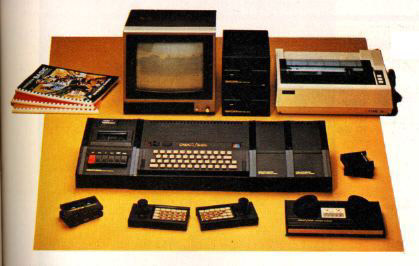 Creativision is promoted with a massive advertising campaign, and it's claimed as being the most powerful home gaming computer system on the market. Promo leaflets feature comparisons with other home computers as Commodore Vic-20, Atari 400 and Radio Shack TRS-80 - and of course Creativision is said to be the best of all. A lot of additional peripherals are pictured - many of which are just "mock-ups" and will never be actually produced. The Wizzard sells very well in Australia, due to the popularity of eccentric billionaire mr. Dick Smith and his electronic supermarkets where the system sells in exclusive right. Dick Smith Electronics not just sells Wizzard systems and software, they also produce new games and utilities, which are sold on tape format for use with the BASIC cartridge and the "Cassette storage module". Very popular books are written by Australian programmers and computing experts, and they sell through the "Dick Smith Publishing" division. Dick Smith sells Wizzard units, software and books from 1982 to 1985, then Bente International becomes a sort of "official" distributor for Creativision (not Wizzard!) stuff in Australia. What about the Japanese market? Rumours say that Creativision doesn't sell well - maybe there are already lots of other popular home computers, or simply users don't take interest in the cheap hybrid coming from Hong Kong. A Creativision fan club is set with the name of "Creativision Club" up and is maintained by VTech in Hong Kong. Subscribers pay a yearly fee and receive a periodic newsletter full of infos and news, and get discount to buy software. After the release of the "Laser" home computer series, the fan club name is changed into "Laser Computer Club". Another importan fan club is based in Melbourne, Australia, and the name is "Wizzdom". Gentleman Barry Klein, the founder, writes a very interesting three-monthly newsletter by using his typewriting machine and his big talent. Contents are pretty "technical" and lots of obscure facts about hardware and software (especially the BASIC cartridge) are unveiled with each issue. Wizzdom lives between January 1984 and the first half of 1985, while the "Laser Computer Club" ceases to exist far after 1986. Maybe aiming to sell more console units, in the end of 1982/beginning of 1983 VTech decides to re-release Creativision with a new shape and a new name: "Funvision" (also sold as Hanimex "Rameses" and Dick Smith "VZ 2000" in Australia) has the same hardware as before, except the "Creativision" logo which is removed from the console boot sequence (modified BIOS?). The connectors layout is changed, and there are no side panels to be removed in order to connect additional peripherals. Also the cartridge slot is different and doesn't allow the use of the "old" Creativision carts (an early form of country lock). Later in 1983 VTech gets ready for a new challenge: to go beyond the concept of videogaming home computer, and focus their efforts into the rising home computer market. A new brand of home computers is set, and the name is "Laser". Various models are produced with the names of Laser 100/110, 200/210 and 300, they're all very cheap and feature quite popular hardware such as Zilog Z80 microprocessors. The Creativision brand is about to disappear forever. The unsold units are repackaged and named "Creativision Mark II". Actually it's the same old console with a new logo, a few hardware changes to allow the use of the (unreleased?) "Colecovision converter" peripheral, and a "Laser 500" text printed on the console front, in order to make users think it's a computer from the newest "Laser" series. VTech is trying to erase the videogaming experience from their history. The "Laser 2001" home computer is this story's last star, and it hits the markets in the end of 1983/beginning of 1984. It features almost the same hardware as Creativision and it's empowered with more RAM, a professional keyboard, many peripherals and... yes, it's a true home computer! Creativision cartridges are fully compatible with Laser 2001, and many games are repackaged with new boxes having Laser logo and colours printed on them. A few games were even released on cassette format, which were originally available on cartridge for the Creativision system. There's a last piece of hardware of remarkable interest: the "Laser Expansion Module #1". Rumours spread about an additional peripheral used to play ColecoVision games on Creativision, but it's actually released for the Laser 2001 computer. A few of them are sold in Finland and have the same aspect as the Finnish version of Laser 2001, named "Manager" and sold through Salora. A full description with pictures can be found at Pelikonepeijoonit web-museum. We have no proof of it being also produced for Creativision, though it's mentioned in the Mark-II unit box.
Bill Gates on the TRS-80 Model 100 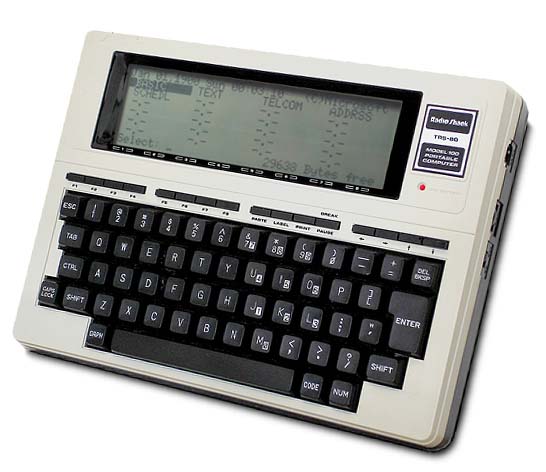 The Model 100 was the last machine that Bill Gates himself actually worked on the code for. Here's what he had to say about it in an interview a few years ago: Q: One of the most interesting machines that came out of this area was the TRS-80 Model 100. Do you want to say a few words about Microsoft's role with that machine? Bill Gates: Yes. This is in a sense my favorite machine, I mean by today's standards it is kind of a pathetic machine. But what happened was Kazuhiko Nishi, my friend from Japan, came over and said that we could have an 8-line LCD with 40 characters. And up to then all we had was four lines by 20 characters. I didn't think using 4 by 20 you could do much that was interesting. But, when he said we could go 8 by 40, then I got to be pretty fascinated with the idea of a portable machine. It wasn't just taking your desktop machine and trying to shrink it down, because battery life would be a problem, and ease of use would be a problem. But just taking the things you want as you move around and making it pretty inexpensive. So, this machine came out for $500. Jey Suzuki, from Japan, and I, wrote the ROM in this machine. It is a 32K ROM. Part of my nostalgia about this machine is this was the last machine where I wrote a very high percentage of the code in the product. I did all the design and debugging along with Jey. And it is a cool user interface, because although most of the code is a BASIC Interpreter, we did this little file system where you never had to think about saving anything. You just had this menu where you pointed to things. It was a great little editor and scheduler. We crammed it all into a 32K ROM. And really designed it in an easy to use way around these special keys up here. This machine was incredibly popular with journalists. Even though it came out over 11 years ago now, it was out by 1982. You still see some journalists using this, although the technology has gone way beyond it. We had some great things here like we had a way that you could add a bar code reader to this. We thought maybe people would distribute software on bar codes. In fact, Byte Magazine got into that for a while. We had a lot of ways you could extend this by putting a new ROM in the bottom. And it was sold not only in the U.S. by Radio Shack, but NEC sold it in Japan, and Olivetti sold it in Europe. And the company who made it, Kyocera, became a good partner of ours for lots of future projects. Q: You may actually want to turn it on so that we can show it. Bill Gates: Let's make sure that this machine is still running. My God, it's a machine that works! I don't know how LCDs work in a camera. What you had here is just your files. And you would just move the cursor to the one that you wanted and hit the Enter key. And then you'd be back editing that file. So, if we go into text, you can type in the name of the program and it would know that's what you wanted. It is a nice screen editor. You can just move the cursor around. The only real problem with this product is that the keyboard was noisy enough that if you sat in a meeting with it, it was still considered anti-social because you'd just be tapping away during the meeting. So actually we did a version, just a slight modification, soon after it came out that had a very silent keyboard so that people could sit in meetings and use it. It is really a nice machine. A great, great way that we use these function keys.
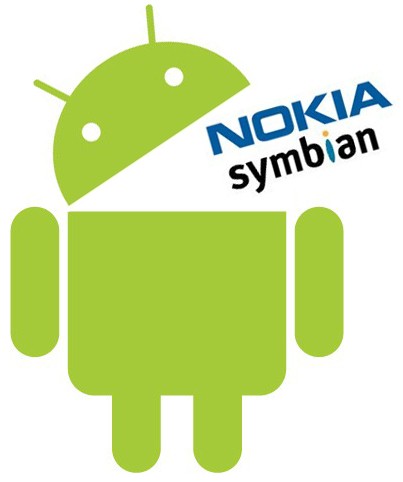 Android Passes Symbian As Most-Shipped Mobile Platform Symbian is no longer the most-shipped mobile platform, with Android finally knocking Nokia's OS out of the number one position. Manufacturers shipped 32.9 million Android devices in Q4 of last year, compared to 31 million Symbian devices, according to Canalys. That gives Google a 33% share of the global mobile market, over 31% for Nokia's Symbian. 'It's gone from nowhere to number one in the space of two years, which is pretty impressive,' Canalys analyst Pete Cunningham said, predicting Android would double its growth rate this year.
The release date for Duke Nukem Forever has been announced. You'll be kicking ass and chewing bubblegum in Duke Nuke on May 3. You'll be able to play Duke Nukem on your PS3, 360 and PC. “The moment fans all over the world have been waiting for is almost here,” declared Christoph Hartmann, president of 2K. “May 3, 2011 marks Duke’s return as he unleashes his brash and brutally honest wit on the world. His return is going to be epic and one that will make video gaming history!” The question, of course, is: Will it be worth the wait? It's hard to even comprehend of a 12 year development time, but from everything we've seen, the Duke Nuke magic is well represented by the game. New screenshots after the break.   Well? What do you think? Give your thoughts on how cool you think this game will be, and, is there anyone who doubts it will actually come out on time? I don't, personally. It's been delayed so many times, you have to figure it's a done-deal this time, right? Still, there's a tiny voice of doubt in the back of my mind...  
the 3DS will come out in Aqua Blue and Cosmo Black
it will cost $249.99 and comes out March 27,2011
Built in software
Home Menu
Your portal to all of the amazing software on the Nintendo 3DS system, the HOME Menu is accessible at all times. Pressing the HOME button during game play automatically pauses the game and lets you resume play later. Need to search the Internet for gaming hints? Pause your game, hit the HOME button, and open the Internet Browser—then return to your game uninterrupted.
You can access a range of useful functions from the HOME Menu without quitting your game—such as the Internet Browser (system update and wireless broadband Internet access required), your Friends List, Game Memos, and your Notifications List—for an incredibly user-friendly experience.
Nintendo 3DS Camera
* 2D image of Nintendo 3DS game
Take amazing 3D photos with the built-in Nintendo 3DS outer cameras, and bring your memories into a whole new dimension. Then utilize a variety of lenses and tools, such as the Merge lens, Pinhole lens, or Graffiti tool, to add flair to your photo gallery.
Mii Maker™
Creating Mii™ characters is a fun social experience for any player, and now this popular feature from the Wii™ console is available on the Nintendo 3DS system with some exciting new touches.
It's easy to create a Mii character from scratch, choosing each facial feature to represent yourself, a friend, or some fanciful character. The real fun happens when you create a Mii from a photo. After choosing just a few basic settings, take a photo of yourself or a friend with the Nintendo 3DS Camera, and let the Mii Maker™ application automatically generate your Mii character. Then make any final adjustments, and voilá! Your Mii is ready.
StreetPass™ Mii Plaza™
StreetPass™ Mii Plaza™ is the place where Mii™ characters meet and greet! When StreetPass™ communication is activated, you can exchange Mii data, recent gameplay info, and more with other Nintendo 3DS owners you pass on the street when your Nintendo 3DS system is in Sleep Mode. You'll then be able to see these Mii characters in the plaza the next time you start playing.
AR Games™
Imagine seeing a video game unfold in the real world...right on your kitchen table, or the floor of your living room! AR Games uses the Nintendo 3DS outer cameras and AR Cards included with the system to present an amazing augmented-reality gaming experience.
Just place one of the AR Cards on a table or floor, and the Nintendo 3DS camera will read the card and initiate game stages or characters right before your eyes. AR Games features different modes, from a wild shooting gallery to an interactive photo shoot with your Mii™ characters—plus more.
ESRB Rating: Everyone
Face Raiders™
Put a friendly face right into the action with the built-in Face Raiders game. Using the camera, you can take a photo of yourself, a friend or family member, which is then placed right onto a range of shooting targets. To play, you'll need to move with your Nintendo 3DS system, physically leaning and turning to search all around and aim high and low, taking out your targets. 3D gameplay combined with the gyro sensor feature makes Face Raiders a fun surprise for any type of gamer.
ESRB Rating: Everyone
Activity Log
The Activity Log tracks both your game play activity, noting which games you've played and how long you've played them, as well as your physical activity, counting every step you take while carrying your Nintendo 3DS. Track your data by day, week, month, or year—and walk more every day to earn Play Coins, which can be used with compatible games and applications to acquire special content and a variety of other benefits.
Download Classic
Games & More
Rediscover classic portable games and so much more through the Nintendo eShop. In it you'll find the Virtual Console™ service, featuring a selection of games from classic Nintendo systems like the Game Boy™ and Game Boy™ Color.
You'll also find new Nintendo 3DS games exclusive to the Nintendo eShop, as well as Nintendo DSiWare games and applications—previously available on Nintendo DSi™ systems. Look out for more information very soon*.
* A Nintendo 3DS system update may be required to access this feature.
Internet Browser
Access the Internet with ease using the built-in Nintendo 3DS Internet Browser. Whether you want to check email or catch up on your favorite news site, it's easy to view a variety of web pages right on your portable system—wherever there is a wireless connection*.
* A Nintendo 3DS system update will be required to access this feature.
Nintendo 3DS Sound
The Nintendo 3DS Sound application lets you listen to your favorite music saved on an SD Card in MP3 or AAC format. You can even record and play with sounds via the Nintendo 3DS microphone with a variety of fun filters.
3D Videos
In addition to 3D games and photos, the Nintendo 3DS system has the capability to show videos in 3D. Look out for more information about 3D video content soon.
More Information Coming Soon
System Transfer
System Transfer is a feature that enables you to transfer downloadable software already purchased on a Nintendo 3DS system to another Nintendo 3DS. Nintendo DSiWare games & applications purchased on a Nintendo DSi or a Nintendo DSi XL system also can be transferred to your Nintendo 3DS.* This function will be available after hardware launch.
*There is a limit to how many times transfers can be made. Some software may not be transferred. More Information Coming Soon
Games
Pilotwings Resort™
Put yourself in the pilot's seat like never before in this 3D update to the Pilotwings™ series! Import your Mii™ characters from the Nintendo 3DS Mii Maker™ and explore Wuhu Island by plane, hang glider and rocket belt. Pilotwings Resort features a breadth and depth of field that can only be achieved with the 3D effects of Nintendo 3DS, offering a feel and style of play never before seen in an aerial sports game.
Super Street Fighter® IV 3D Edition
The ultimate version of Street Fighter® makes its seamless transition to the Nintendo 3DS with Super Street Fighter® IV 3D Edition. The highly acclaimed console experience is now in the palm of your hand with rich new features that utilize the capabilities of the Nintendo 3DS to its fullest.
nintendogs™ + cats
nintendogs are back in the palm of your hand in 3D, with even cuter puppies and now, kittens! Using the built-in Nintendo 3DS camera and facial-recognition technology, your puppies and kittens to react to real-life movements, even jumping up to lick you as you lean in. Take pictures of your puppies and kittens in-game, and share them—or with the Nintendo 3DS augmented-reality feature, watch your puppy play on your own dining room table!
Steel Diver™
Steel Diver™ is a new action-packed submarine combat game from Nintendo that immerses players in amazing 3D environments. Branching paths, split-second decisions and attacks from enemy ships make for a thrilling undersea adventure. The mix of 3D game play and one-of-a-kind controls—using the gyroscope and touch screen of the Nintendo 3DS system—makes for an unique combination that must be experienced to be believed.
Asphalt™3D
The renowned racing franchise returns with higher-quality graphics than ever and for the first time 3D features that create the most realistic, immersive racing experience yet. In Asphalt 3D, you'll power a wide range of high-performance cars and race through 17 exotic locations with the Nintendo 3DS system's accelerometer.
LEGO® Star Wars® III: The Clone Wars
The beloved and critically acclaimed LEGO® Star Wars™ franchise is back and coming to homes around the world in 2011. The third sequel, LEGO Star Wars III: The Clone Wars, combines the epic stories and iconic characters from the Star Wars universe and hit animated TV series Star Wars: The Clone Wars™ with all-new gameplay features.
Kid Icarus™: Uprising
Pit of Kid Icarus™ fame is back in a new game designed specifically for the Nintendo 3DS system by Masahiro Sakurai, creator of the Kirby™ and Super Smash Bros.™ franchises, Kid Icarus: Uprising is a fast-paced and action-packed blend of aerial and ground-based shooting. This follow-up to the original Kid Icarus—released for the Nintendo Entertainment System™ in 1987—has been at the top of gamers' wish lists for years.
The Legend of Zelda™: Ocarina of Time™ 3D
The Legend of Zelda™: Ocarina of Time™ 3D takes the Nintendo 64™ classic – one of the most critically acclaimed games ever made – and returns it to the Nintendo 3DS system with the added depth and realism of stunning, glasses-free 3D visuals. A complete graphical overhaul, plus new game control using the unique features of the Nintendo 3DS system, makes this an exciting adventure to be enjoyed by long-time fans and new players alike.
Madden NFL Football
Madden NFL Football for the Nintendo 3DS brings your favorite NFL teams to life like never before, in 3D graphics. The action jumps off the screen as you compete in traditional 11-on-11 games or high-flying 5-on-5. Whether you're a Madden NFL rookie or an All-Pro, three types of playcalling options provide the right amount of depth for every player.
Dead or Alive® Dimensions
DEAD OR ALIVE Dimensions takes the vivacious characters and locales that have made the DOA franchise a hit with gamers everywhere and presents them in eye-popping 3D. All of the punches, kicks, counters and holds that have defined the series as a top-tier fighter are present for the first time on a portable gaming handheld—the Nintendo 3DS™ system.
Pro Evolution Soccer 2011 3D
For over 15 years, soccer fans have looked to Konami to deliver the most authentic soccer experience short of stepping onto the field and playing the real thing. Now Konami brings fans the first soccer game in 3D – PES 2011 3D for the new Nintendo 3DS gaming platform. Enjoy the game with hefty modes and competitions including the UEFA Champions League and prominent Master League.
Star Fox™ 64 3D
The Star Fox team triumphantly returns to one of its greatest missions with this remake of Star Fox™ 64 in full 3D, featuring a complete graphical update. The entire Star Fox universe spreads out realistically into the depths of the Nintendo 3DS screen while the 3D visuals give the player a clearer grasp of distance and position. This makes the game more approachable and intuitive, thereby allowing players to focus on the action.
RIDGE RACER® 3D
The high octane Ridge Racer® series returns to set the racing world on fire with brand new features. With breathtaking stereoscopic 3D visuals, a wider variety of machines, new environments, expanded customization and updated drift mechanics, Ridge Racer 3D will be the hottest racing game on the Nintendo 3DS.
Combat of Giants™: Dinosaurs 3D
After the great success of the previous Combat of Giants™ titles, Dinosaurs 3D pushes the thrill to bigger heights by immersing the player in an immersive 3D cataclysmic Jurassic world!
RESIDENT EVIL®: THE MERCENARIES 3D
Return to the world of survival horror in Resident Evil: The Mercenaries 3D, only for the Nintendo 3DS system! Your favorite Resident Evil characters begin the fight for their lives in full 3D action unlike any other. Use a host of devastating weapons, and defeat countless enemies in a race against the clock!
BUST-A-MOVE™ UNIVERSE
Pop 'n drop with BUST-A-MOVE UNIVERSE in full vibrant 3D! Pop the bubbles, and watch 'em drop with a whole 3D universe of puzzles to solve!
Super Monkey Ball™ 3D
It's Super Monkey Ball as you've never experienced before! Join AiAi and friends as you tilt and roll your way in to the world of 3D! Lose yourself in each vibrant world as you twist, turn and aim to collect every banana in the fastest time possible. Then play together with friends and be the first to cross the finish line in Monkey Race or get ready for a manic melee in Monkey Fight. Everyone's favorite monkeys are jumping out of the screen with excitement.
Samurai Warriors® Chronicles
The legend of the samurai comes to life like never before with immersive battles featuring 3D graphics! Samurai Warriors Chronicles takes the fan favorite series into uncharted territory with 3D graphics and new gameplay improvements that will bring this franchise to the next level.
Tom Clancy's Ghost Recon® Shadow Wars
Get ready for a new way to experience the critically-acclaimed Ghost Recon series. Marvel at eye-popping 3D cutscenes and in-game effects, where enemies and objects appear to be jumping out at you! Use the Touch Screen for quick and easy mini-map navigation... and much more.
The Sims™3
For the first time ever, enjoy a complete life simulation experience in 3D on handheld with The Sims™ 3 for the Nintendo 3DS. From the creators of the world's most popular life simulator franchise, The Sims 3 is now maximized for a fully 3D world.
 Over the past week, large areas of Australia's eastern seaboard have been ravaged by floods. Billions of dollars worth of damage has been done, and sitting quietly amidst that tally is this man's retro gaming hardware collection. Aussie collector NFG's house in Queensland was among those affected, flood waters getting into his home and destroying many of his personal belongings. Among those belongings was an amazing collection of retro gaming hardware, once a glittering array of the medium's past, now a worthless pile of mud-soaked plastic and chipboards (and rare Nintendo hanafuda cards). PC-Engines, old Sega consoles, Neo Geos, Spectrums, FM Town Martys, old Nintendo Game & Watch handhelds...all gone. You can check out the damage in the gallery below. 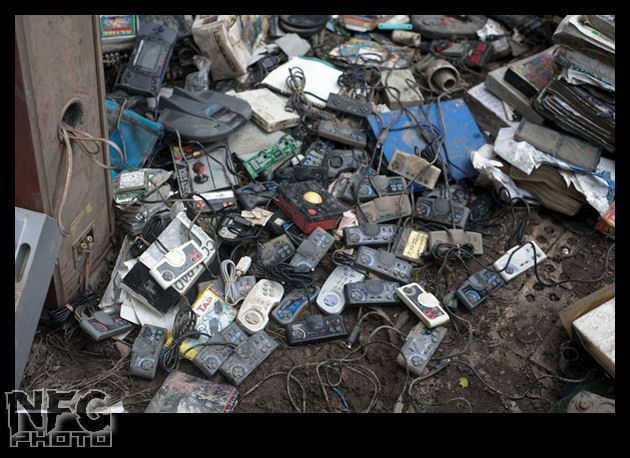 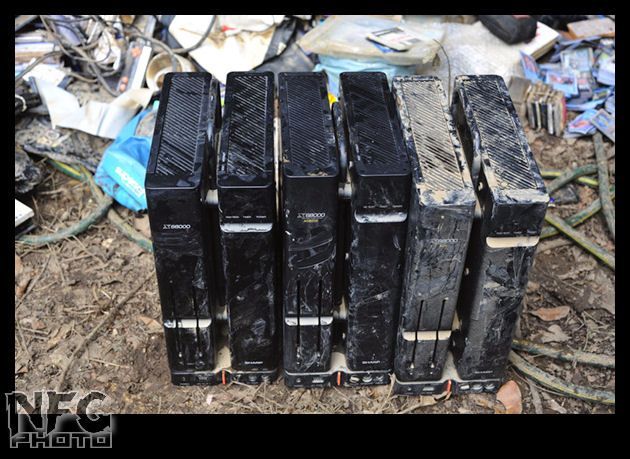  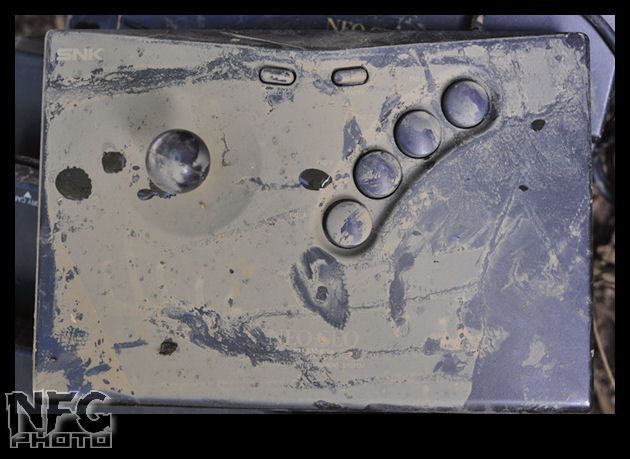 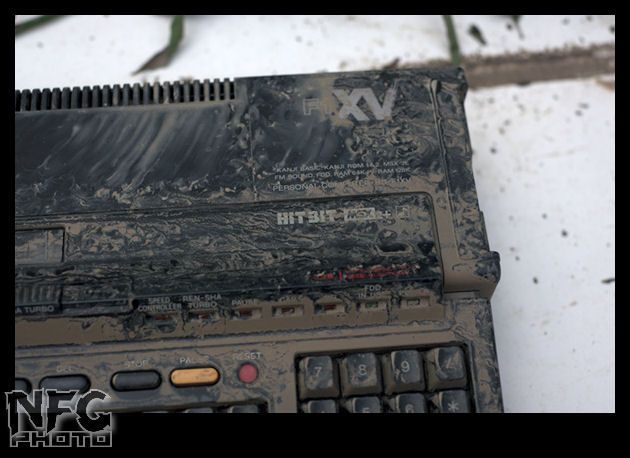 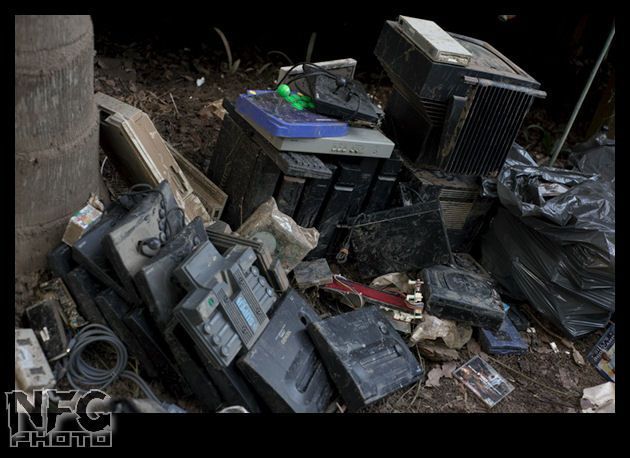  The floods so far have cost twenty lives, with grave fears for dozens more still reported missing. To give you an idea of the scale of the disaster, late last week the total area of the state of Queensland lying underwater was larger than that of Germany and France put together.
Remember the recent discussion around Facebook’s “Face” trademark? SOME OTHER STRANGE TRADEMARKS  Because It’s Everybody’s Business™ (Microsoft) Lips® (Microsoft) Mouse Mischief™ (Microsoft) SpyNet® (Microsoft) (Hmmm…?) MacPAD™ (Apple) (Safeguarded option to the iPad?) Google Zümm™ (Google) Wenwendada™ (Google) BooleDozer™ (IBM) Chiphopper™ (IBM) LOVEM® (IBM) Do You Flip?® (Cisco) DELL THEFT™ Adobe® Pi (Not 3.14?) Buzzword® (Adobe) Flash on.® (Adobe) Giddyup Thangs® (Adobe) Ouch!® (Adobe) Some kind of make sense, others not so much…  Back to the games boys and girls     |

